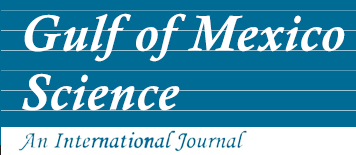Alternate Title
Ecological Implications of Hydrography and Circulation to the Flower Garden Banks, Northwest Gulf of Mexico
Abstract
A synthesis of historic and new physical oceanographic observations on the Louisiana-Texas shelf helps change the circulation paradigm around the Flower Garden Banks. The location of these banks near the shelf edge shields them from the direct influence of the Mississippi and Atchafalaya Rivers and summer hypoxic episodes but places them under direct influence of deepwater physical processes. These deepwater processes control temperature and salinity within ranges that are adequate for coral growth; however, summer temperatures can exceed thermal tolerance limits as evidenced by coral bleaching episodes. Currents near the Banks have longshore and significant offshore components. Loop Current (LC) rings and companion eddies (anticyclones and cyclones) with spatial scales of 30-150 km and residence times ~ 6 mo over the slope are the main driving force of shelf edge currents. This active eddy field induces significant and frequent cross-shelf water exchanges with the deep Gulf, which help regulate temperature, salinity, and larvae dispersal. The eddies also induce oxygen and nutrient enrichments near the mixed layer by sinking and rising water parcels that can help the reef biota. Four links between the Flower Garden Banks and the rest of the Gulf of Mexico are identified: the shelf edge current, LC rings and associated eddies, the mean westward surface wind drift in the Gulf, and alongshelf edge intrusions from the northeastern Gulf of Mexico. The coral reefs of the Flower Garden Banks can function as repositories and sources of reef biota.
Recommended Citation
Lugo-Fernández, A.
1998.
Ecological Implications of Hydrography and Circulation to the Flower Garden Banks, Northwest Gulf of Mexico.
Gulf of Mexico Science
16
(2).
Retrieved from https://aquila.usm.edu/goms/vol16/iss2/4

